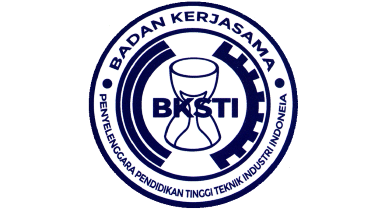Perancangan Autolamp pada Mesin Cutting untuk Meminimasi Produk Cacat Menggunakan Metode QFD di CV. XYZ
DOI:
https://doi.org/10.30737/jatiunik.v6i2.3315Keywords:
Autolamp, Cutting Machine, Defect Product, FMEA, QFDAbstract
Current technological developments benefit the Indonesian garment industry. Garment business must continue to innovate and improve the quality of their products in order to compete in an increasingly competitive market. CV. XYZ is a garment company in Bandung with superior products PDL shirts. The company is facing conflicts over fabric cutting process defects that have not been controlled. It is not yet known exactly the root cause of the cutting process resulting in high product defects. The purpose of this study is to determine the causes of high defects in the cutting process and design improvement strategies in the cutting process that suit user needs. The method used is FMEA which aims to determine the highest causes of defects in the cutting process so that strategies are obtained to minimize product defects, and the QFD method is used to design improvement strategies in the cutting process.. The results of the FMEA analysis found that the main cause of defects in the cutting process was eye fatigue in the operator caused by insufficient lighting in the cutting area. Using the QFD method produces an autolamp design that is integrated into the cutting machine with the function of providing lighting to the cutting area to make it easier for operators to see the fabric cutting pattern area. By using the QFD method in designing autolamp on cutting machines, it can produce product designs that meet the needs of cutting operators and have optimal features.
References
A. N. Widyastuti, “Keunggulan Komparatif Tekstil dan Produk Tekstil Indonesia Terhadap Tiongkok Dalam ASEAN-China Free Trade Area: Tantangan Bagi Indonesia.,” J. Dipl. Int. Stud., vol. 3, no. 1, pp. 65–78, 2020.
M. E. Napitupulu and S. W. Hati, “Analisis pengendalian kualitas produk garment pada project in line inspector dengan metode six sigma di bagian sewing produksi pada pt bintan bersatu apparel batam.,” J. Appl. Bus. Adm., vol. 2, no. 1, pp. 29–45, 2018.
C. Casban, U. Marfuah, and L. S. Rosyadi, “Penerapan Metode Teknometrik untuk Mengukur Kontribusi Komponen Teknologi dalam Proses Produksi Industri Kecil dan Menengah,” JISI J. Integr. Sist. Ind., vol. 8, no. 2, pp. 1–12, 2021.
T. Nur Aziz, M. Rizal, R. Arifianti, and A. Husna, “Strategi Marketing Pada CV. Kembar Jaya Kreatif Dengan Memanfaatkan Analisis Swot Serta QSPM,” Bahtera Inov., vol. 4, no. 2, pp. 128–138, 2021, doi: 10.31629/bi.v4i2.3436.
R. Zulfickar, A. Machmud, and A. Sobandi, “Strategi Kewirausahaan Terhadap Business Performance Dimediasi Kemampuan Kreativitas Dan Inovasi Pada Usaha Garmen Di Pasar Tradisional Bandung,” Edunomic J. Ilm. Pendidik. Ekon. Fak. Pendidik. dan Sains, vol. 8, no. 2, pp. 86–95, 2020.
F. Yuamita, “Pengendalian Kualitas Produksi Sarden Mengunakan Metode Failure Mode and Effect Analysis (FMEA) Untuk Meminimumkan Cacat Kaleng Di PT. Maya Food Industries.,” J. Teknol. dan Manaj. Ind. Terap., vol. 1, no. 1, pp. 1–6, 2022.
A. D. SETIAWAN, “PENGENDALIAN KUALITAS UNTUK MENGURANGI JUMLAH PRODUK CACAT PADA MESIN ES LOLI DENGAN MENGGUNAKAN METODE SIX SIGMA (Studi Kasus: CV. Prima Es Krim),” 2022.
A. Qothrunnada, D. H. Putra, and I. Nugraha, “Analisis pengendalian kualitas produk konveksi dengan menggunakan metode six sigma pada PT. XYZ,” Proceeding, vol. 15, no. 1, pp. 139–145, 2022.
S. Riadi and H. Haryadi, “Pengendalian Jumlah Cacat Produk Pada Proses Cutting Dengan Metode Quality Control Circle (QCC) Pada PT. Toyota Boshoku Indonesia (Tbina).,” J. Ind. Manuf., vol. 5, no. 1, pp. 57–70, 2020.
F. S. Pratama and S. Suhartini, “Analisis Kecacatan Produk Dengan Metode Seven Tools Dan Fta Dengan Mempertimbangkan Nilai Risiko Dengan Metode Fmea.,” J. Senopati Sustain. Ergon. Optim. Appl. Ind. Eng., vol. 1, no. 1, pp. 43–51, 2019.
A. Anastasya and F. Yuamita, “Pengendalian Kualitas Pada Produksi Air Minum Dalam Kemasan Botol 330 ml Menggunakan Metode Failure Mode Effect Analysis (FMEA) di PDAM Tirta Sembada.,” J. Teknol. dan Manaj. Ind. Terap., vol. 1, no. 1, pp. 15–21, 2022.
Y. Delvika, “Analisis Kualitas Produk Rumah Tangga Dengan Metode Quality Function Deployment (QFD) Pada PT. ABC.,” J. Ilm. Tek. Ind. Prima (JURITI PRIMA), vol. 4, no. 1, 2020.
P. Priyono and F. Yuamita, “Pengembangan Dan Perancangan Alat Pemotong Daun Tembakau Menggunakan Metode Quality Function Deployment (QFD).,” J. Teknol. dan Manaj. Ind. Terap., vol. 1, no. 3, pp. 137–144, 2022.
M. Qurthuby and H. Purnomo, “Usulan Desain Meja Komputer dengan Metode Quality Function Deployment (QFD).,” Semin. dan Konf. Nas. IDEC, vol. 2, 2019.
A. Nurrahman, F. Rismaningsih, U. Hernaeny, L. Pratiwi, Wahyudin, and Abdul rukyat, Pengantar Statistika 1. Media Sains Indonesia, 2021.
C. Fajri, A. Amelya, and S. Suworo, “Pengaruh Kepuasan Kerja dan Disiplin Kerja terhadap Kinerja Karyawan PT. Indonesia Applicad.,” JIIP-Jurnal Ilm. Ilmu Pendidik., vol. 5, no. 1, pp. 369–373, 2022.
I. B. Suryaningrat, W. Febriyanti, and W. Amilia, “Identifikasi risiko pada okra menggunakan failure mode and effect analysis (FMEA) di PT. Mitratani Dua Tujuh Di Kabupaten Jember.,” J. Agroteknologi, vol. 13, no. 1, pp. 25–33, 2019.
S. Suhartini, “Pengembangan Produk Meja Belajar Multifungsi Dengan Menggunakan Metode Quality Function Deployment Dan Antropometri.,” J. Tecnoscienza, vol. 4, no. 2, pp. 301–318, 2020.
S. Suseno and T. T. Huvat, “Perancangan Alat Panggangan Otomatis Menggunakan Metode Qfd (Quality Function Deployment).,” J. Teknol., vol. 12, no. 2, pp. 123–129, 2019.
I. B. Suryaningrat, N. S. Mahardika, and M. E. Firlanarosa, “Desain Kemasan Sekunder Pada Produk Prol Tape Dengan Metode Quality Function Deployment (QFD) (Studi Kasus di UD. Purnama Jati, Kabupaten Jember),” J. Agroteknologi, vol. 15, no. 01, pp. 11–23, 2021.
A. Hanafie, A. Haslindah, A. Septiani, and M. F. Saputra, “Pengembangan produk kemasan ikan kering dengan metode quality function deployment (QFD)(Studi kasus pada nelayan di Kab. Pangkep),” J. Ind. Eng. Manag., vol. 1, pp. 6–9, 2020.
S. Nurochim and A. N. Rukmana, “Perancangan Produk Waistbag dengan Menggunakan Metode Quality Function Deployment (QFD).,” J. Ris. Tek. Ind., pp. 1–13, 2021.
C. Fajri, “Perancangan Shelter Bus Mebidang Dengan Menggunakan Quality Function Deployment (QFD).,” J. Sist. Tek. Ind., vol. 22, no. 1, pp. 77–89, 2020.
Downloads
Published
Issue
Section
License
Copyright (c) 2023 JATI UNIK : Jurnal Ilmiah Teknik dan Manajemen Industri

This work is licensed under a Creative Commons Attribution-NonCommercial-NoDerivatives 4.0 International License.
Information regarding Copyright and Licensing at JATI UNIK as follows:
- Licensed Use of Non - Commercial Articles will be governed by the Creative Commons Attribution license, which is featured on the Creative Commons Attribution Non-Commercial Share A Like 4.0 International License.
- The author guarantees that the articles published through JATI UNIK are original and do not contain statements that violate the law do not violate others' rights are subject to copyright, which is held exclusively by the author and free from the rights of third parties. The author is allowed to quote from various sources used for research and not to harm any party.
- JATI UNIK disseminates articles published with the rules set by Creative Commons. UNIK JATI license allows users to copy, distribute, display, and work for non-commercial purposes. Users also need to connect authors and JATI UNIK with the distribution of articles in journals.
- The Author rights, namely copyrights, ownership rights, patents, rights to use the substance of articles in the future, rights to reproduce articles for personal purposes and not to be traded, rights to conduct personal archives, rights to contract used for the non-exclusive distribution of articles published in the form a book and acknowledge the initial publication of the article originating from JATI UNIK.
- Suppose articles published by the author through JATI UNIK are compiled with other authors. In that case, it is necessary to create a form containing the authority of all authors involved in the article's production by including the agreement agreed upon by all authors in the article.
- The next point is, the agreement can be terminated if the author or JATI UNIK violates the agreement and cannot make repairs to the customer within a maximum of 2 months after being given information asking for the violation to be corrected. If there is no violation of the agreement, the license will automatically terminate and affect UNIQUE JATI UNIK.
- Regarding royalties, so far, if it is following applicable legal regulations, the author will waive his right to collect royalties on articles that have been licensed by JATI UNIK.
- In publishing the article, the editorial process is successful. JATI UNIK will continue it. JATI UNIK has the right to adjust articles related to punctuation, spelling, capital letters, references used, and usage adapted to JATI UNIK. The author acknowledges that the article can be published and accessed free of charge by the public.
Deprecated: json_decode(): Passing null to parameter #1 ($json) of type string is deprecated in /home/ojs.unik-kediri.ac.id/public_html/plugins/generic/citations/CitationsPlugin.php on line 68















